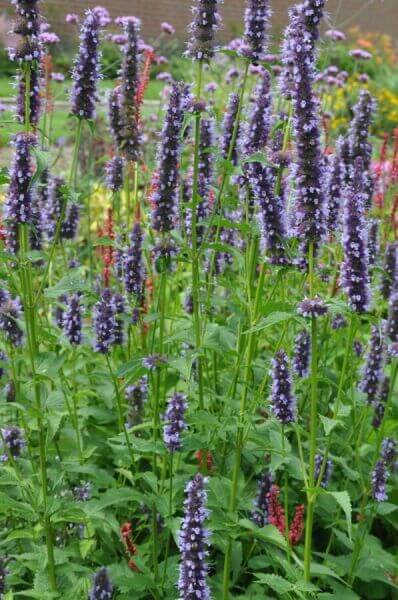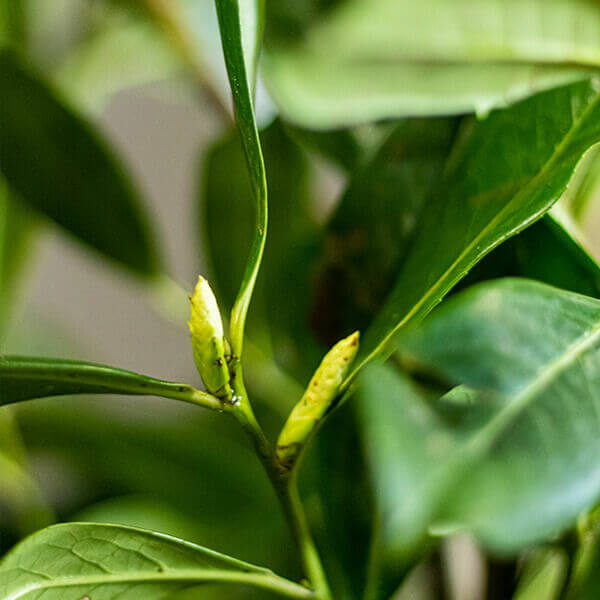Best Hedging Plants For School Grounds
Best Hedging Plants For School Grounds
Blog Article
Best Hedging Plants For Ground Cover
Boost your garden's allure with lavish hedge ranges such as Yew (Taxus), Thuja, Laurel, Photinia, and Bamboo, commemorated for their structural stability and ecological advantages.
Yew and Thuja offer evergreen coverage and winter season resilience, while Laurel provides quick growth and broad, aromatic leaves.
Photinia adds seasonal beauty with its vibrant red foliage, and Bamboo provides a low-maintenance, tranquil ambiance.
These hedges enhance air quality, reduce noise, and produce tranquil, personal spaces.
Appropriate planting, spacing, and upkeep ensure vigorous development and eco-friendly harmony.
Explore how these rich ranges can raise your garden's beauty and well-being.
Secret Takeaways
Change Your Garden With Lush Hedge Ranges
- Select Yew for its thick, evergreen growth and unrivaled durability.
- Go with Laurel for its quick growth and broad leaves, ensuring quick privacy.
- Select Photinia for its lively seasonal foliage, which turns a striking dark red.
- Make use of Bamboo for a low-maintenance, winter-hardy hedge with visual appeal.
- Area plants 2-3 per meter and prune regularly for optimal growth and health.
Popular Hedge Plants
When transforming a garden with rich hedge ranges, it's important to think about popular hedge plants such as Yew, Thuja, Laurel, and Photinia due to their special characteristics and benefits.
Yew (Taxus) is highly respected for its durability and thick, green development, making it a prime option for sustaining landscapes.
Thuja is kept in mind for its evergreen foliage and robust winter season durability.
Photinia adds seasonal vibrancy with red leaves that darken with time, developing vibrant visual appeal.
Laurel uses quick development and aromatic, broad leaves, suitable for quick privacy.
Additionally, Bamboo is an excellent option for atmosphere, providing a low-maintenance, winter-hardy choice that improves the garden's aesthetic with its elegant, swaying walking canes.
These choices accommodate a variety of horticultural needs and choices.
Advantages of Garden Hedges
Garden hedges provide a wide variety of benefits, making them an important addition to any landscape. These natural barriers are cost-efficient to execute and provide significant wind defense, improving air circulation and adding to noise reduction. The thick foliage of hedges like Thuja and Beech guarantees privacy by blocking visibility, developing a tranquil and secluded environment.
Hedges likewise play an important role in microclimate guideline, providing a steady environment that promotes plant development and lessens temperature changes. Their intricate leaf structures filter toxins, improving air quality and adding to a healthier garden community.
Moreover, hedges master sound reduction, absorbing and deflecting acoustic waves to lower ambient noise levels. This dual performance of offering both visual and acoustic privacy improves the overall serenity and visual appeal of any garden.
Planting and Maintenance Tips
For an effective hedge, careful preparation of the planting area is important. Ensure the soil has appropriate pH and drain to support strong root development.
Space the plants properly for the picked species. Water the hedge often throughout its preliminary growth phase, adjusting as required with seasonal modifications.
Implement a organized bug control and disease prevention technique, utilizing natural or chemical treatments when required. Routinely check for aphids, termites, and fungal infections.
Apply mulch to retain moisture and suppress weeds. Seasonal pruning promotes dense development and air blood circulation, necessary for plant health.
Following these standards will help you cultivate a vibrant, well-maintained hedge that improves the charm of your garden.
Spacing and Cutting Standards
Spacing and Cutting Standards
Correct spacing and cutting are vital for cultivating healthy, visually appealing hedges. Adequate spacing guarantees each plant receives adequate nutrients, light, and airflow.
Follow these guidelines for ideal hedge maintenance:
- Spacing: Position hedge plants 2-3 plants per meter to encourage robust growth.
- Pruning Techniques: Routine pruning is necessary for keeping wanted hedge height and shape. Trim new growth in summer and cut down older wood throughout winter season.
- Seasonal Care: Change trimming schedules and techniques according to seasonal requirements to ensure plant health.
- Hedge Height: Frequently monitor and trim to maintain the desired hedge height and accomplish uniform visual appeals.
Abiding by these actions will ensure your hedge flourishes, improving both the appeal and functionality of your garden.
Picking the Right Hedge
Selecting the Right Hedge
Choosing the appropriate hedge includes assessing factors such as fully grown height, foliage density, and environmental resilience. Effective hedge plant selection requires understanding each types' growth characteristics and site-specific flexibility.
For example, Yew (Taxus) offers exceptional longevity and thick growth, while Thuja is significant for its winter resilience. Furthermore, considering upkeep requirements is crucial; fast-growing types like Laurel or Privet need regular cutting, whereas low-maintenance choices like Bamboo or Ivy may be more suitable for those seeking minimal maintenance.
Environmental aspects such as soil type, light accessibility, and wetness conditions ought to likewise direct the choice process. This cautious approach guarantees the picked hedges will grow, offering both functional and visual benefits to the garden landscape.
Delivery and Planting Advice
To ensure your hedge plants prosper, they need to be delivered by specialized carriers and planted without delay upon arrival.
Follow these important steps for successful planting:
- Soil Preparation: Improve the soil with raw material to improve drainage and nutrient material.
- Planting Depth: Develop a trench twice the width and equal to the depth of the root ball.
- Watering Methods: Water completely after planting, keeping the soil regularly wet but not saturated.
- Mulching: Use a layer of mulch to keep wetness and suppress weeds.
Client Assistance and Service
Offered the essential function of prompt help in horticultural pursuits, our customer assistance team is available 6 days a week through telephone, e-mail, and social networks to offer skilled advice and swiftly attend to any concerns. Their dedication to fast reaction times ensures consumer complete satisfaction by resolving queries associated with plant health, optimal planting techniques, and upkeep schedules.

Within 24 hours
This thorough support group, strengthened by an outstanding 9.3/ 10 consumer ranking, highlights our dedication to boosting the gardening experience for every single client.
Frequently Asked Questions
How Long Does It Take for Hedge Plants to Establish?
Hedge plants generally require one to three years to become fully established, with the exact period differing by types and growing conditions.
Reliable care throughout this vital duration is vital for robust growth. Consistent watering, vigilant weed control, and appropriate fertilizer application are essential in promoting strong root development.
For example, fast-growing species like Laurel may develop quicker, while slower-growing ranges such as Yew may take longer. Persistent maintenance speeds up the establishment process, leading to healthy and thick hedges.
What Are the Best Hedge Plants for Personal Privacy?
The question of the finest hedge plants for personal privacy includes assessing evergreen and deciduous choices.
Evergreen hedges like Thuja, Laurel, and Cypress offer year-round coverage, making sure constant privacy.
In contrast, deciduous hedges such as Beech use seasonal privacy, shedding leaves in colder months.
Secret upkeep suggestions for privacy hedges consist of regular trimming, fertilizing in spring, and correct spacing-- generally 2 to 3 plants per meter.
Furthermore, constant watering and persistent weed removal are important for promoting healthy, dense development.
Can Hedge Plants Draw In Wildlife to My Garden?
Yes, hedge plants can attract wildlife to your garden by offering essential advantages like shelter, food, and nesting sites, therefore improving regional biodiversity. For instance, yew, holly, and laurel are excellent for drawing in birds, while ivy supports a range of bugs.
Nevertheless, it is necessary to keep in mind that there are some downsides, such as increased maintenance to handle bugs and regular maintenance. Carefully picking and keeping hedge varieties can assist balance these disadvantages and advantages, ultimately cultivating a dynamic and sustainable community in your garden.
Exist Any Blooming Hedge Plants Available?
Yes, there are flowering hedge plants available that can improve the appeal of your garden.
For instance, Elaeagnus, also understood as Olive Willow, produces aromatic white flowers in the fall, including a touch of elegance.
Photinia, another popular choice, showcases lively red leaves that grow into a rich green, creating a dynamic visual impact throughout the seasons.
To make sure these plants thrive, it's vital to practice appropriate pruning methods and seasonal upkeep, such as cutting brand-new development in the summer and cutting back in the winter.
These steps will assist preserve the health and visual appeal of your blooming hedges.
How Do I Avoid Bugs in My Hedge Plants?
To avoid bugs in hedge plants, use natural bug control approaches and keep correct hedge care. Present beneficial insects like ladybugs, which prey on harmful bugs, to develop a well balanced environment.
Frequently check your hedges for indications of problem and without delay get rid of any afflicted parts to prevent the spread. Ensure the health of your hedges get more info by applying well balanced fertilizers and supplying appropriate water.
Use mulching to keep soil moisture and proper spacing to reduce plant tension and promote robust development. These practices collectively help in minimizing bug concerns and preserving a healthy hedge.
Conclusion
In essence, choosing the right hedge ranges such as Yew, Thuja, and Laurel can transform any garden into a peaceful sanctuary. These plants supply year-round greenery, enhance visual appeal, and offer practical advantages like noise decrease and wind security.
Proper planting strategies, precise spacing, consistent watering, and seasonal cutting are crucial for optimal development.
Trusted shipment services and expert consumer support ensure a smooth experience from purchase to planting, making it simpler than ever to raise your outdoor area.
Garden hedges offer a plethora of advantages, making them an important addition to any landscape. These natural barriers are economical to implement and supply significant wind defense, enhancing air blood circulation and contributing to noise decrease. The dense foliage of hedges like Thuja and Beech guarantees privacy by obstructing presence, creating a remote and tranquil environment.

Pruning Techniques: Routine pruning is vital for preserving desired hedge height and shape. Cut new growth in summer season and cut back older wood during winter season.
Report this page